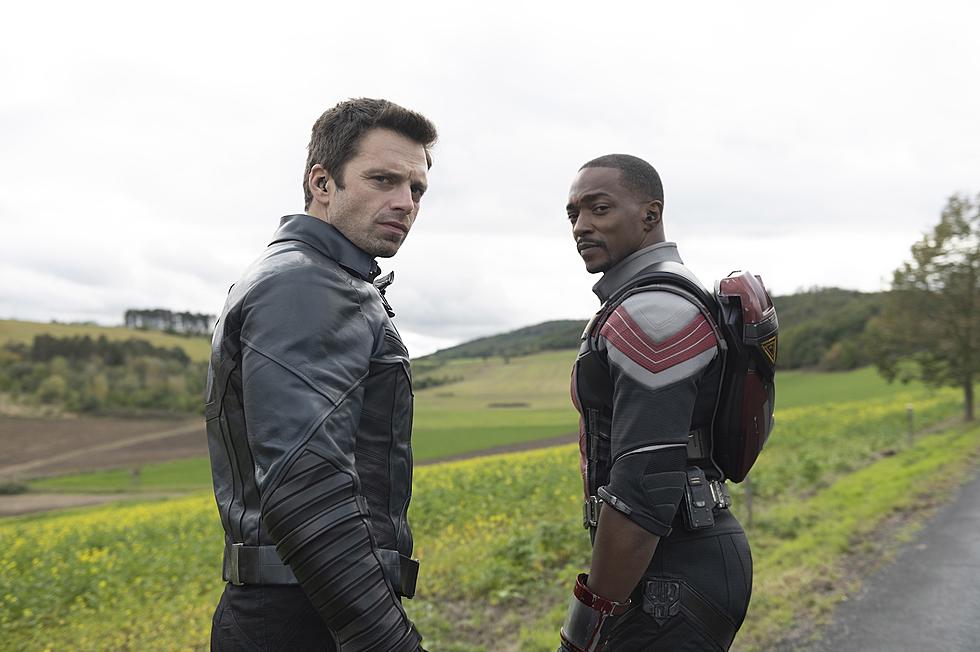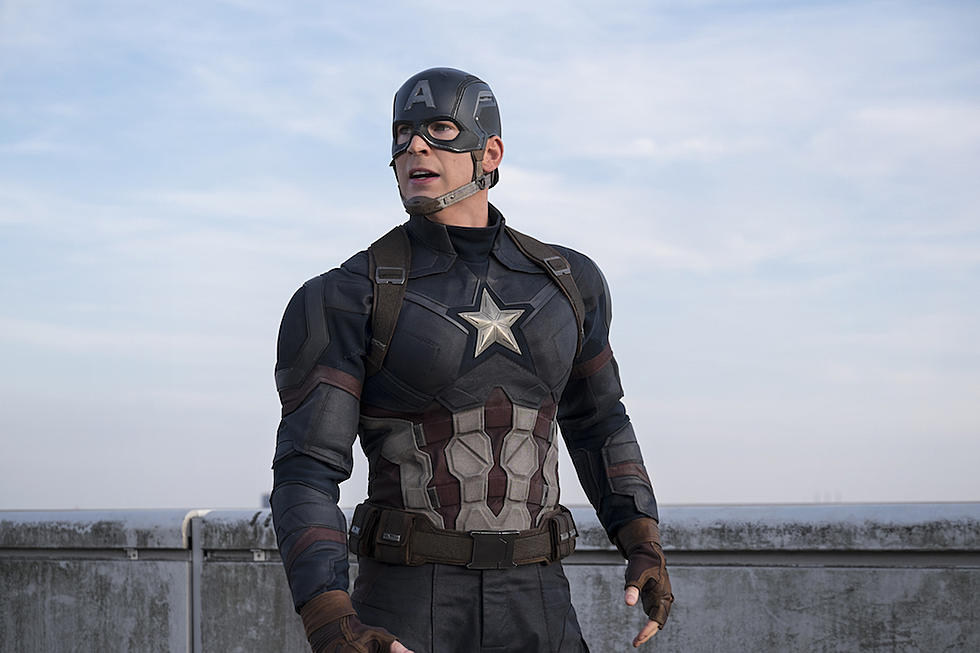
Ask Chris #156: KILL-DERBY!
Q: Wait, what's this I hear about Captain America in a roller derby? Did that really happen? -- @RonHogan
A: Like a lot of comics fans, I spent my Independence Day talking to people about my favorite Captain America stories. Before long, this particular issue came up -- mostly because I'm only about five seconds away from talking about Cap and the Falcon battling their way through a roller derby to the death at any given time. It's sort of my go-to topic in case there's a ever a lull in the conversation, which is why I'm always such a hit at parties.
Point being, yes, my friends, that comic is very real. And it is amazing.
It happens in Captain America #196, right near the start of Jack Kirby's return to Marvel in 1975 after the stint at DC that saw him creating The New Gods, The Demon, and OMAC, among others. It's an era that produced some of my favorite Kirby comics, as it combined that wild, boundless '70s Kirby style that I love with a return to characters he'd created years -- and in Cap's case, decades -- before. This was, after all, the era that brought us Devil Dinosaur, the series that saw an angry Tyrannosaurus Rex stomping aliens to death in the Garden of Eden. That might actually be the platonic ideal of a Kirby comic, but books like Captain America and Black Panther were right up there with it.
I have a personal connection to this one, too: It's actually the issue after the first Marvel comic I ever read. I was around four years old, and I don't know where I got my hands on Cap #195 -- it would've been a ten year-old back issue then -- but I do remember that it scared the living hell out of me. There's a scene with Captain America watching an army of crazed fanatics whipped up into a frenzy that drove them to tear a "Freedom Freak" effigy that was hanging from a gallows called "The Love Machine" apart and club it with metal pipes. That was just too much for my young mind to handle, to the point where even seeing the cover scared me, and drove me right back to those nice, safe Batman comics where he was breaking drug dealers' thumbs. I think that actually might be why I love Kirby's work so much now -- particularly the stuff from the '70s. Things that seemed scary and weird when you were a kid always have a weird little thrill to them.
I do wish I'd stuck around for one more issue, though, because #196 is where things get wild. The whole thing's collected in a paperback called Madbomb, but if you haven't read it, here's the basic plot: There's a secret organization that wants to overthrow America at the bicentennial using a sonic bomb that'll drive everyone crazy, after which they'll reinstate the aristocracy and turn all undesirables into cavemen to use as slaves. You know, standard comic book villain stuff. By this particular issue, Cap and the Falcon have infiltrated their secret hideout, met the head bad guy's daughter (Cheer Chadwick), been captured, and forced to compete in the deadly sport known as Kill Derby!
And this is where things start to get weird.
One of the things I really like about this story is how much importance Kirby puts onto the idea of Cap's shield as a symbol. I love that, because it underscores one of my favorite things about the character: He's a soldier who doesn't carry a gun. He carries a shield, because he exists to protect and defend people against the forces that would hurt them. It's one of the most elegant ideas in comics, and something that I think really plays into Kirby's idealized vision of what America should be, and it's also one of the reasons why stories where Cap carries a gun never really feel right for me. It's a big symbol, and in Cap's view -- and Kirby's -- that symbol has a lot of power.
So obviously he can't let it be used to kill people in an underground roller derby to the death.
The choice is clear. They're going to have to enter the Kill Derby themselves, recover the shield, and escape from the "New Society" compound while the other entrants concern themselves with winning the actual pot of gold that the elites are using as a prize. And that means it's time for Cap on a skateboard!
A super-fast rocket skateboard, no less.
Incidentally, the large figure between Cap and the Falcon? That's Tinkerbelle, the captain of their Kill Derby team, and the woman who punched out and captured both heroes in the previous issue. Unfortunately, she's only able to give them the basics of the game, but as it's one of those time honored "win or die" propositions, it seems pretty simple anyway.
It does make me wonder if I should be watching more real-world roller derby, though. I mean, I know they use rollerskates instead of skateboards these days, but flamethrowers are still legal, right?
Right.
Once they're on the track, what follows is some fantastic Kirby sports (or at least sports-ish) action. The dude with the flame thrower gets blown up, but he's wearing a fireproof suit so he keeps skating around and setting everything on fire, people are throwing gladiator nets and shooting missiles out of their fingertips. It's awesome. There's even a panel where Cap has a line of dialogue that I'm pretty sure Kirby himself said to Stan Lee when he left Fantastic Four:
It's a great sequence, full of the kind of big ideas that Kirby specialized in, with deathtraps that were big and weird enough to be a threat to his big, weird heroes.
Eventually, Cap and the Falcon find the guy who stole Cap's shield, but rather than just jumping on him and taking it back by force, Cap tries one last time to reason with him:
And that, I think is what really sticks with me about this story, and a lot of what Kirby was doing in the '70s. He's constantly exploring ideas of morality in the strangest possible ways, whether it's the modern mythology of The New Gods or something as goofy and almost slapstick as Cap battling his way through the Kill Derby to get his shield back so he can stop a bomb with a mechanical brain inside it from going off. That stuff provides the backdrop, but what's really going on here is a portrayal of the ultimate soldier, someone who was essentially created for war, who still only uses violence as a last resort.
In this story, Captain America and the Falcon are forced into a situation where everyone else is glad to be there, gleefully murdering each other with flamethrowers and clubs because there's money waiting for the survivor. Even after going through that, even after participating in that by necessity, Cap's still trying to find a better way. And when he can't, when he has to fight, it's not something he's happy about.
Kirby treats even the silliest, most cartoony superhero violence as a regrettable necessity at best, and that's amazing. He's never particularly subtle about it -- using an actual pot of gold as the prize is about as on the nose as you can get, even compared with the rest of the story -- but he doesn't need to be, either. It's all there on the page, mixed up with rocket skateboards and brain-bombs.
Ask Chris art by Erica Henderson. If you’ve got a question you’d like to see Chris tackle in a future column, just send it to @theisb on Twitter with the hashtag #AskChris, or send an email to chris@comicsalliance.com with [Ask Chris] in the subject line!
More From ComicsAlliance









